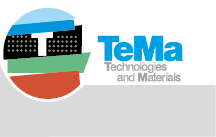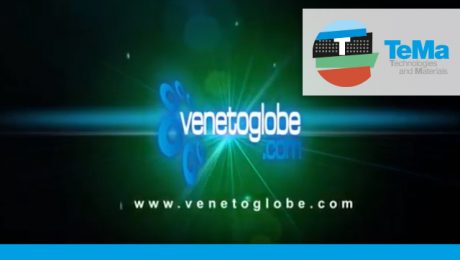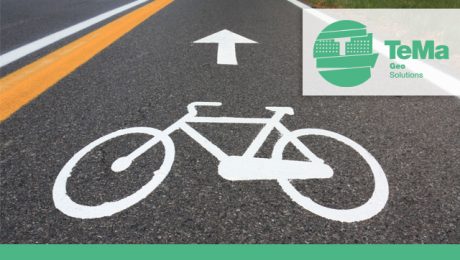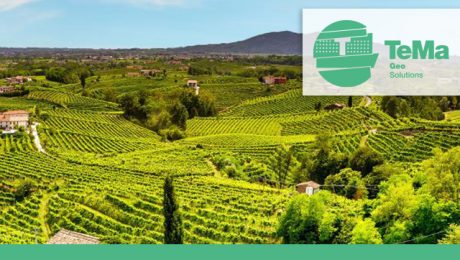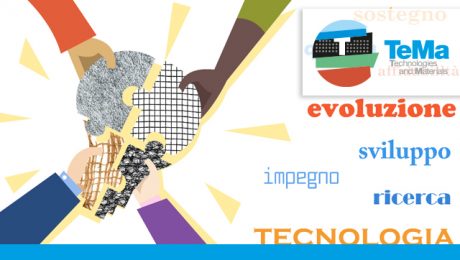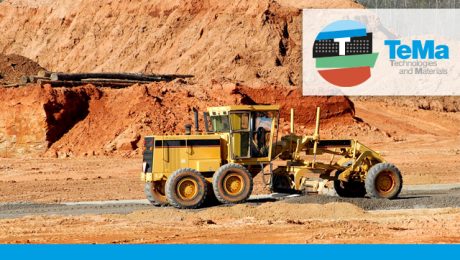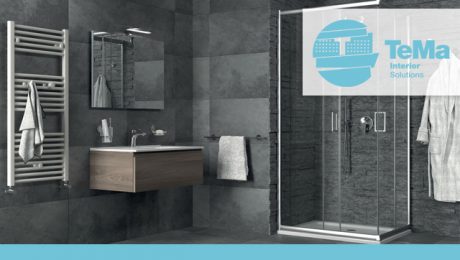Venetoglobe interviews Luciano Mazzer
For the “VOCI DA…” column, the radio and television broadcaster Venetoglobe interviewed Luciano Mazzer, asking for his opinion, as an entrepreneur and as president of the major international group IWIS, on the current situation. He offers a frank picture of this difficult time that raises concerns about the future and about its partners at production plants located in Europe, Asia and America.
He reflects on when all this will be over, with a responsibility that looks to the future hoping that the time to start again is imminent.
First and foremost, he says that he will need to consider all his employees. As for the rest, strong commitment will be required from institutions.
- Published in CORPORATION, news
Cycle/pedestrian paths: when we get back onto our saddle, we’ll know more about them…
We know that our bike has become a mirage. But we can promise ourselves to use it more when this period of seclusion is over. Meanwhile, why don’t we take advantage of the time available to discover interesting things all around us? For example, cycle paths. Let’s start at the beginning.
What is the correct definition of a cycle/pedestrian path?
It’s where you can ride your bike, of course. But, can pedestrians walk on it too? What is the direction of movement? Then there are increasingly more complex questions, such as: has it been built as a separate cycle path or as a reserved lane? Is it a cycle/pedestrian path or a vehicular/cycle path? In short, there are many features that a cycle/pedestrian path must have in order to be defined as such. Let’s take a look at them together.
The cycle/pedestrian path was invented to allow pedestrians and bikes to get about. Such paths require cyclists to respect pedestrians and get off their bike whenever necessary to avoid getting in the way. Consequently, they are not paths for the exclusive use of cyclists.
Creating these kinds of paths encourages people to get about without using a car, thanks to these dedicated spaces, where they can feel safe from urban traffic.
How do you build a cycle/pedestrian path?
In 2018 TeMa Geo Solutions built a cycle/pedestrian path in Cozzuolo di Vittorio Veneto (TV). One of the main aims of the project was to improve road safety in an area that is a gateway to the city and where a city park is situated, used by families and children.
First of all, we enlarged the road and the nearby roundabout in order to create the necessary space for inserting the path. The enlargement was facilitated by the construction of a reinforced earth escarpment, for which reinforced geogrids were used. Installed in the ground, they create friction and enable the system to withstand significant levels of stress. The intervention work, designed on the basis of a single berm positioned at about 2 metres above ground level, allowed pedestrian and cycle traffic in an area that had been dangerous from the outset.
Looking on the bright side, when you get back onto your saddle, you’ll be more aware of what’s under your wheels. Enter the TeMa world, visit our website.
TeMa: a support for the ground
Geo Solutions is the TeMa division that has been developing technologies and products for protection, maintenance and drainage in the field of major environmental works for over twenty years.
A SPECIAL FOCUS ON THE TERRITORY
More specifically, due to the location of its first production unit – situated near the hills that are now a UNESCO World Heritage Site – TeMa has always kept an eye on agricultural lands and especially wine-producing landscapes, which are now gaining increasing attention because of their economic importance and their environmental value.
This new focus on the landscape, including the agricultural one, has never been as relevant as now. We have officially entered the green year and therefore, today, we want to show you some systems for preserving your wine crops.

THE MAIN RISKS: EROSION AND DRAINAGE
The main risks that undermine the stability of the soil include: the natural erosion of the topsoil with the resulting need to reinforce it and the problem of water drainage.
EROSION: CAUSES AND SOLUTIONS
Soil erosion is caused by rainwater runoff, which, by removing the top layer of the soil, can cause significant erosion in the long term.
Various applications are available that provide protection against soil erosion. TeMa proposes natural and synthetic solutions, depending on the circumstances: a 100% natural jute fibre bionet can be used, or a three-dimensional PP geomat, such as KMat. A system of geosynthetic reinforcements (woven geotextiles or geogrids), once embedded in the subsoil, recreates a tensional layer that absorbs any stress of greater intensity than the soil.
DRAINAGE: CONSEQUENCES AND SOLUTIONS
Finally, to solve the fundamental cause of soil instability, namely drainage, TeMa has developed drainage trenches capable of removing water that is naturally absorbed by the ground. These are trench excavations, usually rectangular in section, filled with natural inert material, such as gravel or broken stones from quarries, with a high degree of permeability. Removal takes place either through the trench filling material or through the drainage pipe located at the base of the trench. To avoid another possible problem, i.e. clogging of the pipe, it is entirely covered with layers of non-woven fabric.

WHY CHOOSE TeMa?
Its attention to details, to small things, sets one company apart from all others. This is why TeMa stands out in its sector, thanks to its drive towards innovation and its respect for the environment, whose landscapes are unchanged after intervention works by TeMa.
Find out more, explore the TeMa website.
- Published in GEO, Landfills, news, Research and development, Synthetic turf soccer fields - Accessories
Successful collaboration
In all three of its divisions, TeMa has an in-company technical department that supports and assists its customers in the various phases of implementing a project. We take care of all the details, from choosing the solution to using the method of installation.
At TeMa, our technicians use in-depth analysis and cutting-edge software to propose effective, complete and reliable solutions for any type of intervention in the field of geosynthetic products. The dimensional evaluation, structural checks and specifications of the products to be used are of considerable support for the planner or the contractor. But that’s not all. The same is also true for the most experienced operators in the sector who feel the need to expand their knowledge, gaining experience in a constantly developing field. And the outcome? Being able to propose versatile solutions in step with technologies.
The companies in the IWIS Group, including TeMa, have implemented their production plants using innovative technologies, investing in a system that ensures that soil, air and water are protected. We have three photovoltaic plants, 200 kWp, 150 kWp and 100 kWp, which allow us to use energy obtained from renewable sources. The holding company also uses recycled materials for some of its production processes, relying on 4 specific plants for recycling plastics.
TeMa Geo has the support of a research laboratory, among other things, since the company firmly believes that only constant commitment to researching and developing new solutions is the key to success and constant improvement. Collaboration between the technical office and the testing and quality laboratory, especially in the geosynthetics sector, is fundamental: it gives the company’s customers state-of-the-art solutions with researched and tested products while supporting planners and contractors with the correct installation of the proposed solutions. Tests of durability, compressive strength and drainage capacity in the most critical situations are just some of the tests that TeMa laboratories carry out daily to ensure that its products meet the strict pre-established quality standards. The fact that these products are natural and/or recycled guarantees that they are not harmful to the environment, confirming TeMa’s commitment to environmental protection.

It is precisely this continuous pursuit of excellence that has allowed TeMa to obtain UNI EN ISO 9001:2000 certification, which acknowledges a quality system with the highest levels of performance. Moreover, in compliance with the CPD (Construction Product Directive) 89/106/EEC, the product ranges proposed by TeMa have followed the procedure to obtain the CE mark.
Find out more about TeMa Geo Solutions products.
- Published in CORPORATION, GEO, Research and development
TeMa will participate in the 17th African Regional Conference on Soil Mechanics and Geotechnical Engineering
On October 7, 8 and 9 you will find us at the “The 17th African Regional Conference on Soil Mechanics and Geotechnical Engineering” in Cape Town, South Africa.
Innovation and sustainability in geotechnics for the developing Africa
This fair is very important for the African continent because it will allow professionals, academics and students of all geotechnical backgrounds to participate in meetings of technical committees, workshops, exhibitions and tours. Among the numerous conferences there will be some held by people of significant importance in the field of geological development, such as Professor Delwyn Fredlunf, a world-renowned expert in the field of unsaturated soils. The 7th Conference of African Geotechnical Engineers (AYGEC) will begin Sunday 6 October, before the African Regional Conference. The AYGEC conference will offer the ideal opportunity for young geotechnical professionals to interact and present their work on a continental platform. The program has been tailored to encourage young geotechnical practitioners to attend the pre-conference courses and stay on for the main conference.
Our stand is located on the FOYER AREA, STAND n 17.
For more information click here to visit the official website of the fair!
- Published in CORPORATION, Exhibitions and events, news
New TeMa subsidiary office for sub-Saharan Africa
TeMa has launched its new sales office, TeMa South Africa, which is based in Johannesburg, South Africa.
It will be the new company node for the entire sub-Saharan area and offer the complete product range and technology of the 3 company divisions: Building, Geo and Interior Solutions.
Ruggero Fontana is the Sales Manager for Africa. “The intention of the new office is to be close to and better serve our new and existing customers in this part of the African continent, including retailers, construction companies and design engineers. The needs of this territory are not new to TeMa, as we have already supplied many of our products into the region in the past. Having the new office and team closer to the market will allow us to better react and support the needs of the region”.
Darryn Meisel has been appointed CEO of TeMa SA and will be supported by an experienced technical and commercial team ready to face the new challenges and requirements of the market. “It is really exciting for our team to be part of the TeMa family” – says Darryn – “I met the staff and researchers in the TeMa R&D department and saw how many new products and solutions are being studied and brought to market. This gives us confidence that the future will be really exciting and that we will be able to continually satisfy and surprise our customers for many years to come”.

The expansion continues
The new sales office in South Africa is expanding the presence of TeMa | Technologies and Materials in the world. TeMa is a truly global company that currently operates 6 production plants in Europe, Asia and North America and has a commercial distribution and technical assistance networks that extend to some 60 countries.
- Published in CORPORATION, news
Tips for the correct installation of studded membranes
It is essential to avoid making errors when designing and installing membranes for the protection and drainage of foundations: if any damage results over time due to design errors, you will not be entitled to compensation from insurance companies. Moreover, repairing damage to foundations could be very expensive and intrusive, or, in the most extreme cases, impossible to carry out.
THE CONFIGURATION OF THE WATERPROOFING SYSTEM, THE CHOICE OF SUITABLE MATERIALS FOR THE STRUCTURE AND THEIR CORRECT INSTALLATION ARE THE KEY ELEMENTS FOR WORK PROPERLY DONE.
Here are some tips from us for properly done installation:
1- To obtain excellent drainage, use TeMa Building membranes bonded with non-woven fabrics that act as filters to prevent soil from clogging the system.

2- To provide mechanical protection for the waterproofing, use studded membranes, following the specific instructions for installation. The TeMa Building range offers membranes with specific mechanical resistance and various dimensions of studs, making them suitable for the different types of performance required.
Important: As they have concentrated pressure points, membranes with particularly sharp studs may easily mark the waterproofing membrane if installed with the studs facing it.
The studs of TeMa Building membranes have a truncated cone shape and the larger surface area in contact with the waterproofing allows safe installation with the studs facing both the membrane and the ground.
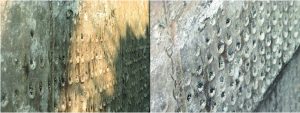
3- The mechanical fixing systems of the TeMa Building range are specifically designed for easy and safe installation of the membranes. They can also withstand stress resulting from backfilling and the natural settling and subsidence of the soil, without damaging or tearing the membrane.
Important: The application of the flame-applied membrane alone is not recommended, since it makes the system more vulnerable during backfilling operations and settling.

Thanks to these precautions during installation, you will be guaranteed an excellent and long-lasting result, protecting the building from seepage and damp!
Visit our website to find out about all our membranes!
Earth and rocks from excavation in the new decree 2017
Fast procedures and certain times: environmental checks within 60 days, reusable materials 90 days from delivery of the Plan of use
Introduction on excavated rocks for reinforced soil filling
It is not infrequent the case in which the material filling the earths reinforced by flexible or rigid inclusions can come from large excavation sites (from works in the tunnel, for example).
Today, in fact, the reinforced soil with inclusions are part of the composite materials, and their use involves the improvement of the characteristics of the original soil and the formation of systems with mechanical characteristics higher than those that would occur with the soil alone.
The tests and experiments carried out have made it possible to ascertain that the reinforced earth, consisting of excavated rocks and the flexible reinforcement mechanism, provides static and structural, environmental, operational, and economic advantages, with vast possibilities of use and reintegration possibilities.
Earth and rocks from excavation: certain times
Within 60 days the analysis activities are carried out by the Environmental Protection Agencies, such as the verification of the existence of the requirements stated in the plan of use of the earth and excavation rocks generated on large sites.
At 90 o’clock from the delivery of the Management Plan, the management of excavated earth and rocks generated on large construction sites can be started, according to the indications contained in the Plan.
Lands and rocks from excavation: simplified procedures
Starting the management and use of excavated lands no longer requires the waiting for authorizations, but a maximum of 90 days from the presentation of the plan. Instead, the Agencies were not required to meet any deadline to certify the achievement of the requirements from European and national standards to qualify excavated soil and rock by-products, as it was not established. Therefore, preventive approval expires.
Lands and rocks from excavation: changes and extensions to the floor
Even in the case of substantial changes to the plan of use of the land and rock by qualified excavation ‘by-product’, once submitted, decaying the prior approval the procedure is speeded up. For example, if the change concerns the quantity, the new standard allows to apply the classification of by-product to the part of land and rocks indicated in the plan, applying the management obligation as waste only for the excess quantities. These rocks, which are classified as waste, now undergo a specific regulation as regards their temporary storage and the maximum permitted quantities, greater than those of Legislative Decree 152/2006.
Residues from the processing of stone materials are now excluded from excavated earth and rocks, allowing the qualification of such residues as ‘by-products’.
The regulation concentrates on the particular of the reclamation sites, where specific procedures are established for the excavations as well as the conditions of use of the lands and rocks excavated on the basis of their conditions.
The novelty with respect to the previous repealed rule is that the extension at the end of the plan may be two years, and must take place through communication to the Municipality and to the competent Environmental Protection Agency.
Rules repealed by the new decree on excavated earth and rocks
Ministerial Decree 161/2012, containing the regulations used until the new decree on the use of excavated earth and rocks, various regulations that make up the following decrees: art. 41 in Decree Law 69/2013, art. 184 bis and 266 paragraph 7 of Legislative Decree 152/2006.
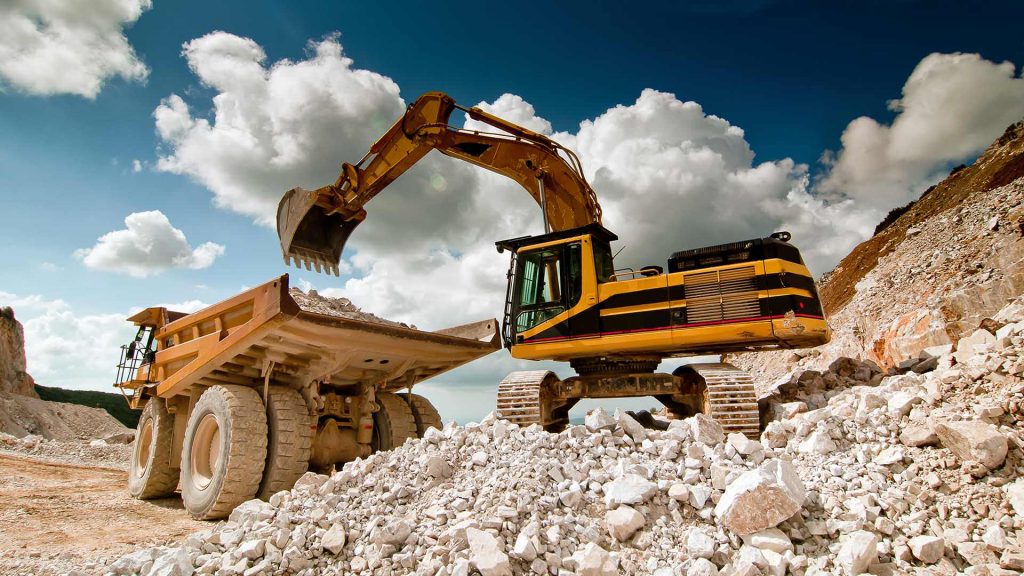
- Published in CORPORATION, news
TeMa waterproofing systems
Three-layer waterproofing membrane for sub-tile applications for the protection of walls and floors from steam transmission with accessories
Discover the theme solutions to make your bathroom safe and dry, watch the video
Baths and showers: TeMa waterproofing systems
Discover the three-layer waterproofing membrane for sub-tile applications for the protection of walls and floors from the transmission of steam with accessories
Discover the theme solutions to make your bathroom safe and dry, watch the video
